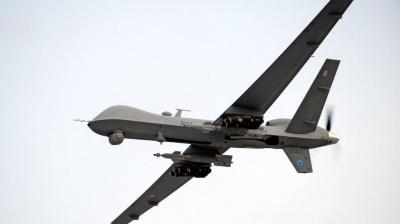The use of drones has significantly increased in nearly all modern battlefield tasks, from surveillance and information gathering to executing direct strike attacks, reshaping contemporary and future warfare strategies. A report published by the American magazine National Interest reviewed the specifications of five of the most important drones recently, notably the MQ-9 Reaper and the GD Avenger.
1. **MQ-9 Reaper**
The MQ-9 Reaper is an armed drone operating on the front lines of the U.S. Air Force. It was designed as an advanced version of the previous MQ-1 Predator fighter and is distinguished by its ability to carry a significant amount of munitions, allowing it to effectively execute strike missions against hostile targets. The Predator's capabilities were limited to carrying more than two Hellfire missiles or small bombs, while Reaper drones can carry double the amount of Hellfire missiles and bombs weighing up to approximately a quarter-ton.
2. **GD Avenger**
In second place, following the Reaper drones, is the Avenger drone from General Dynamics, which operates on jet power and offers greater endurance, able to carry munitions weighing up to half a ton.
3. **MQ-4 Global Hawk**
The Global Hawk drone is surprisingly old, having been first launched in 1998. The Global Hawk versions remain at the forefront of drone technology due to continuous improvements. Updates and developments for the MQ-4 Global Hawk unmanned vehicles have included active electronically scanned array (AESA) radar and enhanced modified sensors.
4. **RQ-4 Global Hawk**
Since the RQ-4 version of the Global Hawk drone performs a similar role in strategic reconnaissance and intelligence gathering as manned U-2 aircraft, there is limited information available regarding its contribution to current U.S. military efforts. However, experts believe that the ongoing procurement and continuous development and upgrading of Global Hawk drones is evidence that it remains one of the best drones in the world. The Global Hawk has also demonstrated its reliability countless times over the past two decades, and since reliability is a fundamental characteristic of drones, its track record in this area places it among the best globally.
5. **EA-18 Growler**
Traditional fighter aircraft converted into drones have long been used, such as the Boeing EA-18 Growler, but the evaluation of their performance primarily depended on their efficiency in achieving targeted roles. However, a recent flight test of the EA-18 Growler drone revealed incredible capabilities, as electronic warfare (EW) tasks and suppression/destruction of enemy air defenses (SEAD/DEAD) are extremely dangerous, often requiring flight directly into or near enemy air defenses. Converting such aircraft into drones could prove a remarkably advantageous move for the U.S. Navy, but one must not overlook the excess economic costs or the lack of aerodynamic benefits of a drone designed for this purpose.




